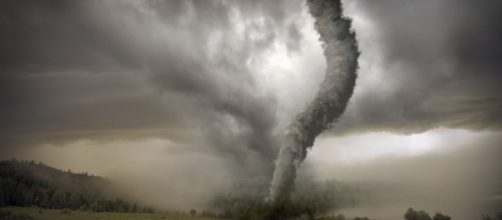The big problem with tornadoes is that they can pop up at a moment’s notice, giving people on the average 13 minutes notice to get to shelter before they hit. At least with hurricanes, people have days to secure their homes and, if necessary, flee to safety. According to Popular Science, a mechanical Engineer named Jamey Jacob and a team from Oklahoma State University are working on drones that can fly into storms and collect data in real time to determine when and if they start spawning tornadoes.
The way the system would work is that Storm Chasers would release swarms of drones into a storm likely to start generating tornadoes.
The drones, specially designed to survive flying in high winds, would collect data such as air pressure, temperature, and wind velocity at various points in the storm. Then the storm chasers would feed the data into a computer model that should predict when and whether tornadoes will pop up. The goal is to give people at least an hour’s notice, giving them more time to seek shelter and otherwise prepare.
A number of things have to happen before this system can be in place.
First, drones have to be developed that will survive as much as 120 mile an hour winds. The UAVs will be lightweight and made of a composite material similar to Kevlar. The drones have to be ready to take to the air at a moment’s notice and not with the several hours prep time that is currently required.
Then, the mechanics of Tornado Formation have to be studied more systematically. Scientists are still unsure why tornadoes pop up in some situations and not in others. The sensor-laden drones will be used to create accurate models so that scientists will be able to accurately predict when and where tornadoes appear.
Finally, an instant system for alerting the public will have to be developed, including alerts on TV and the Internet and text messages. The quicker people can be warned, the more time they will have a chance to shelter and the more who will survive a tornado strike.
Tornado deaths per year tend to track the number and severity of the storms, ranging from several hundred in 2011 to a couple of dozen so far in 2017.
The drone system will likely cut down on the number of deaths considerably. Recent storms wreaked a path of destruction that ranged from Texas to Maryland with little or no warning. Some of the people who died might have lived they had more warning time to seek shelter.

